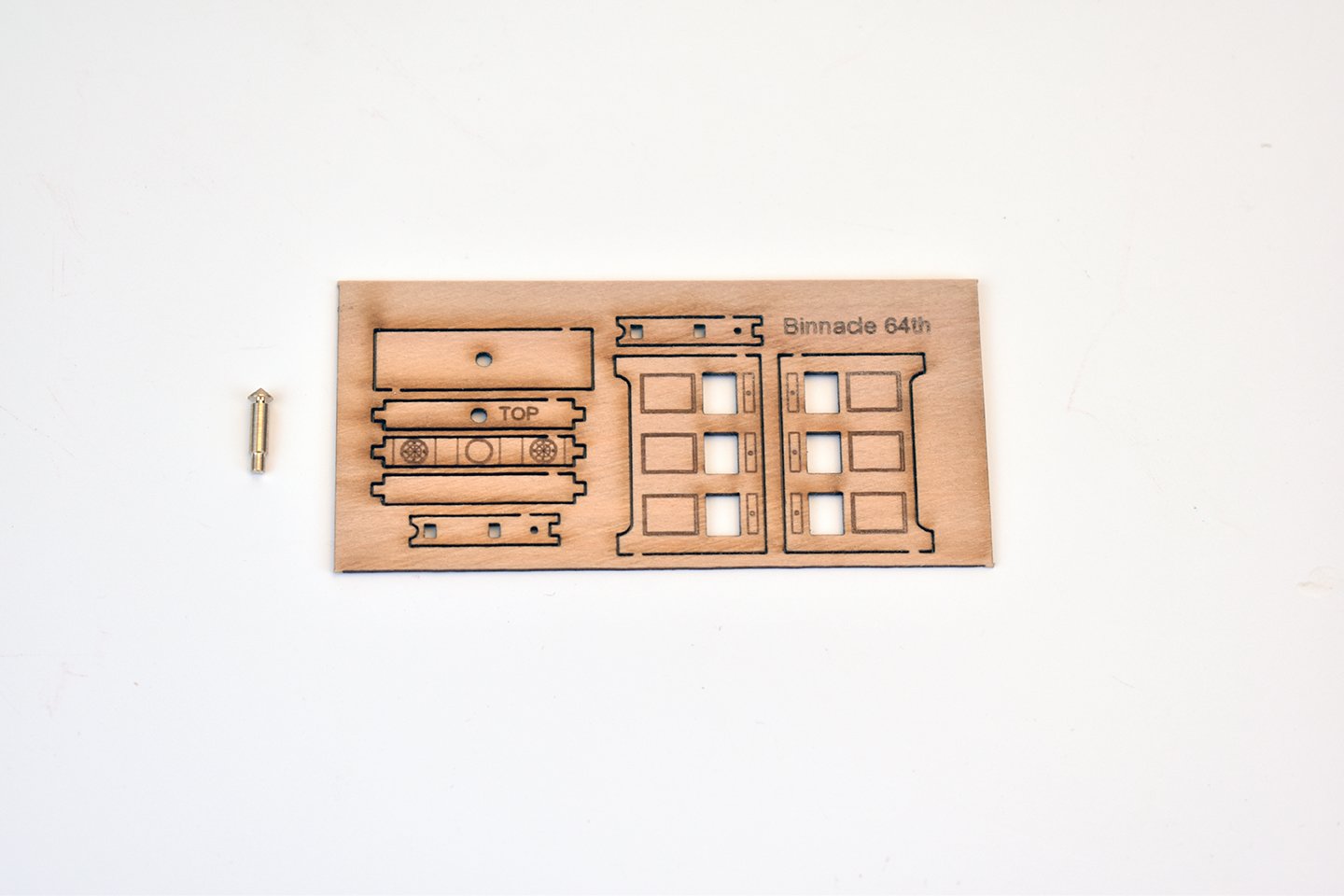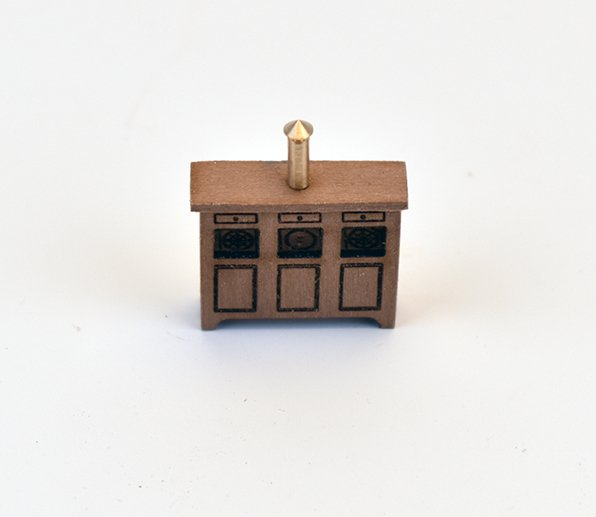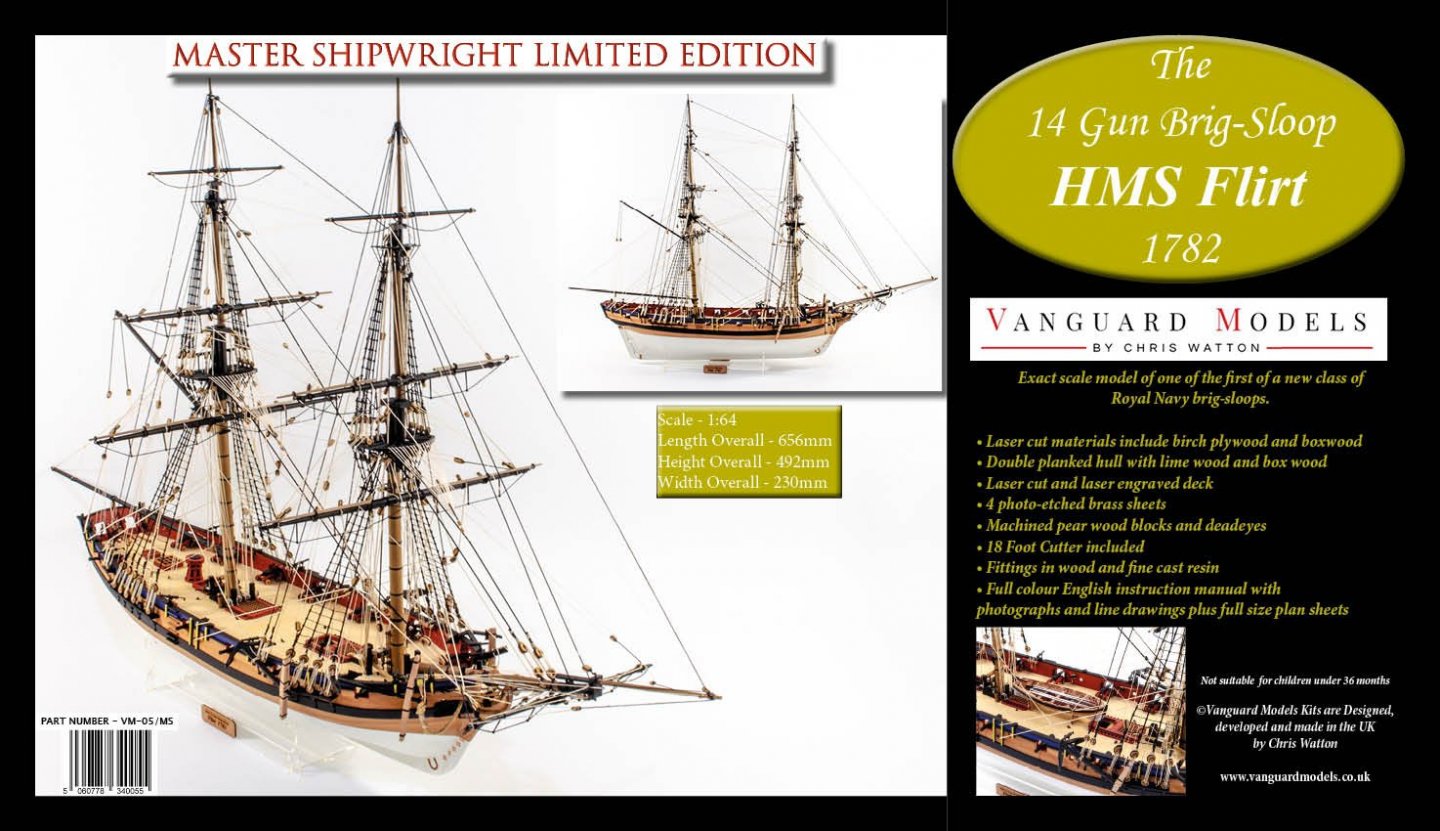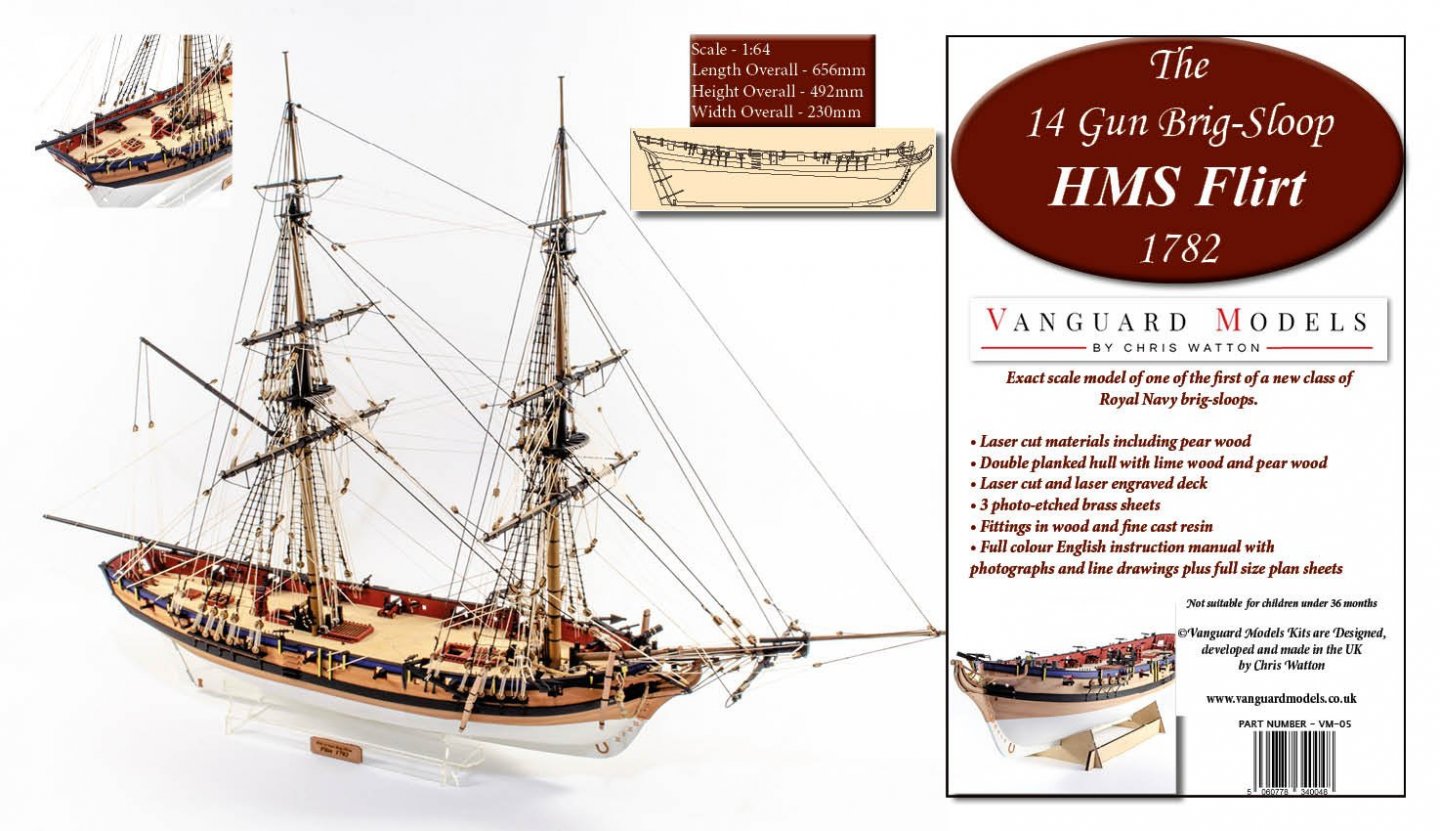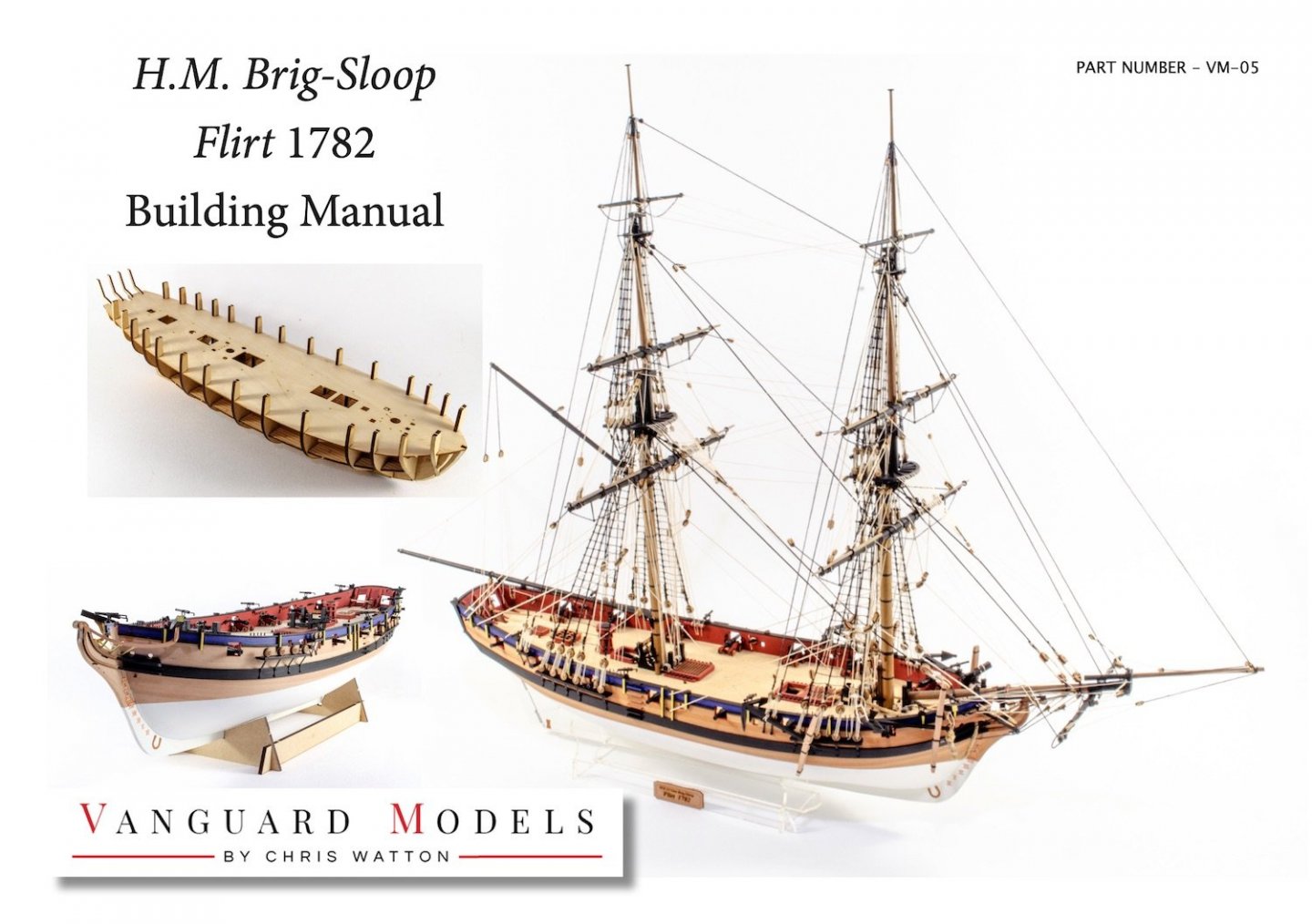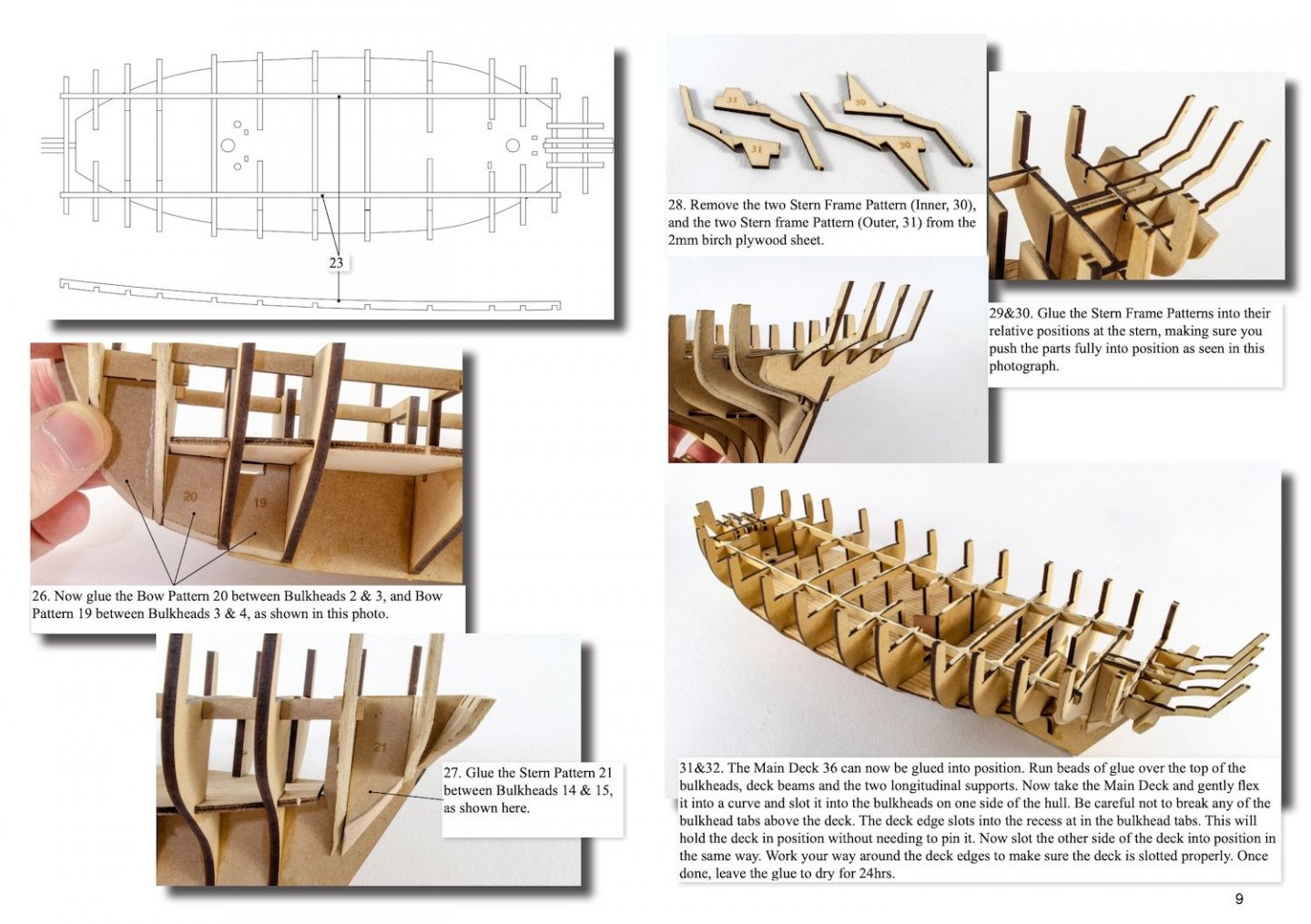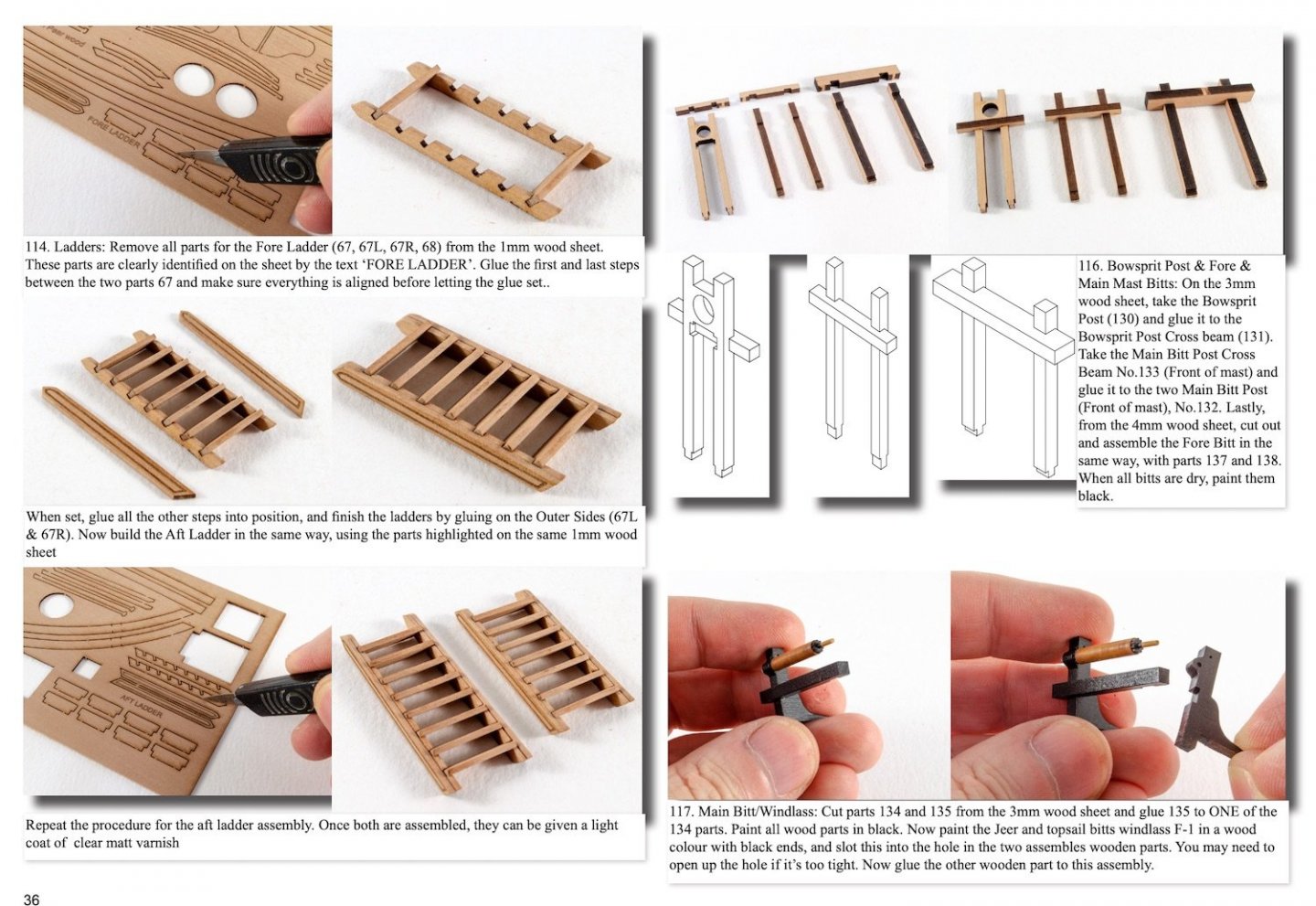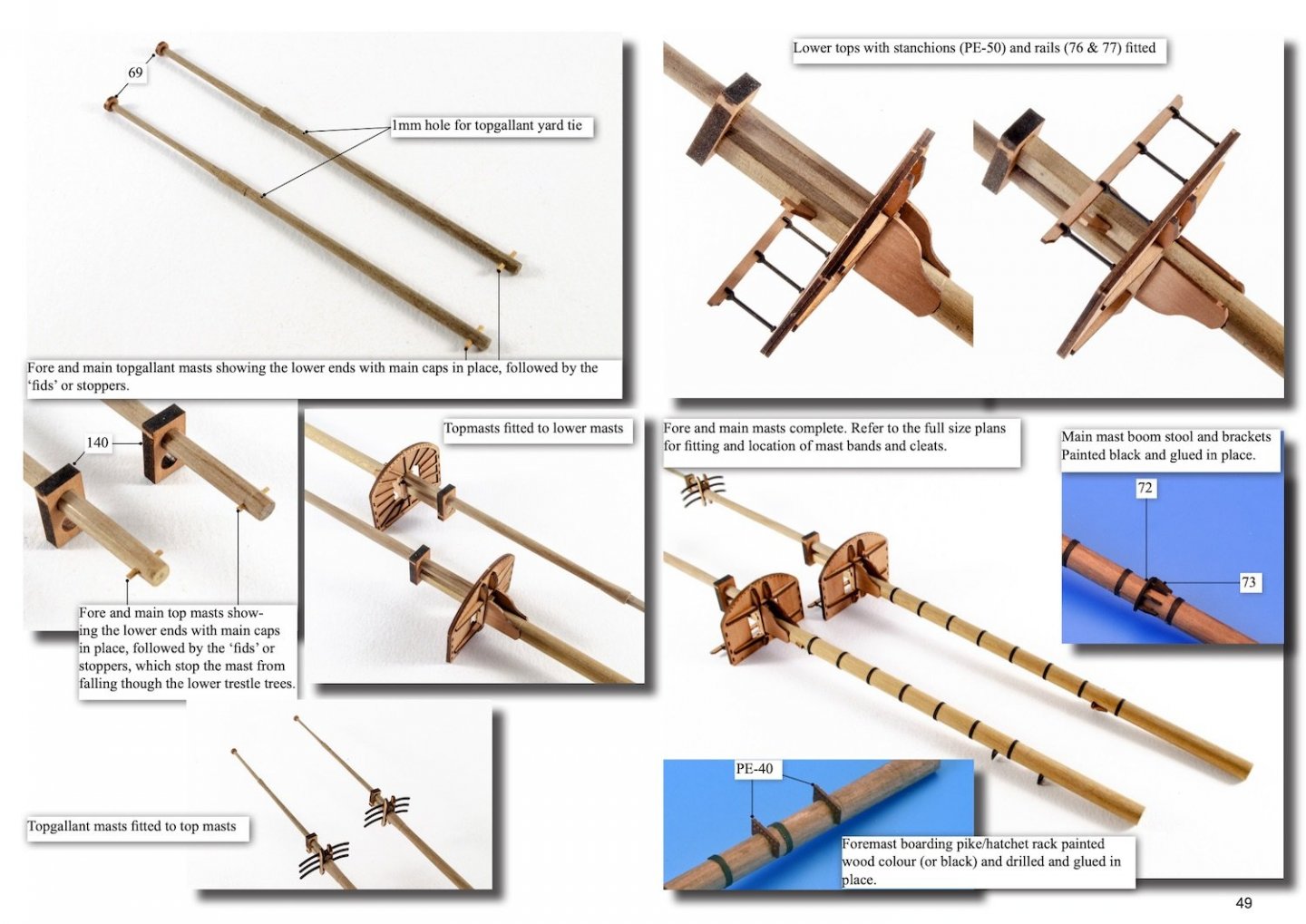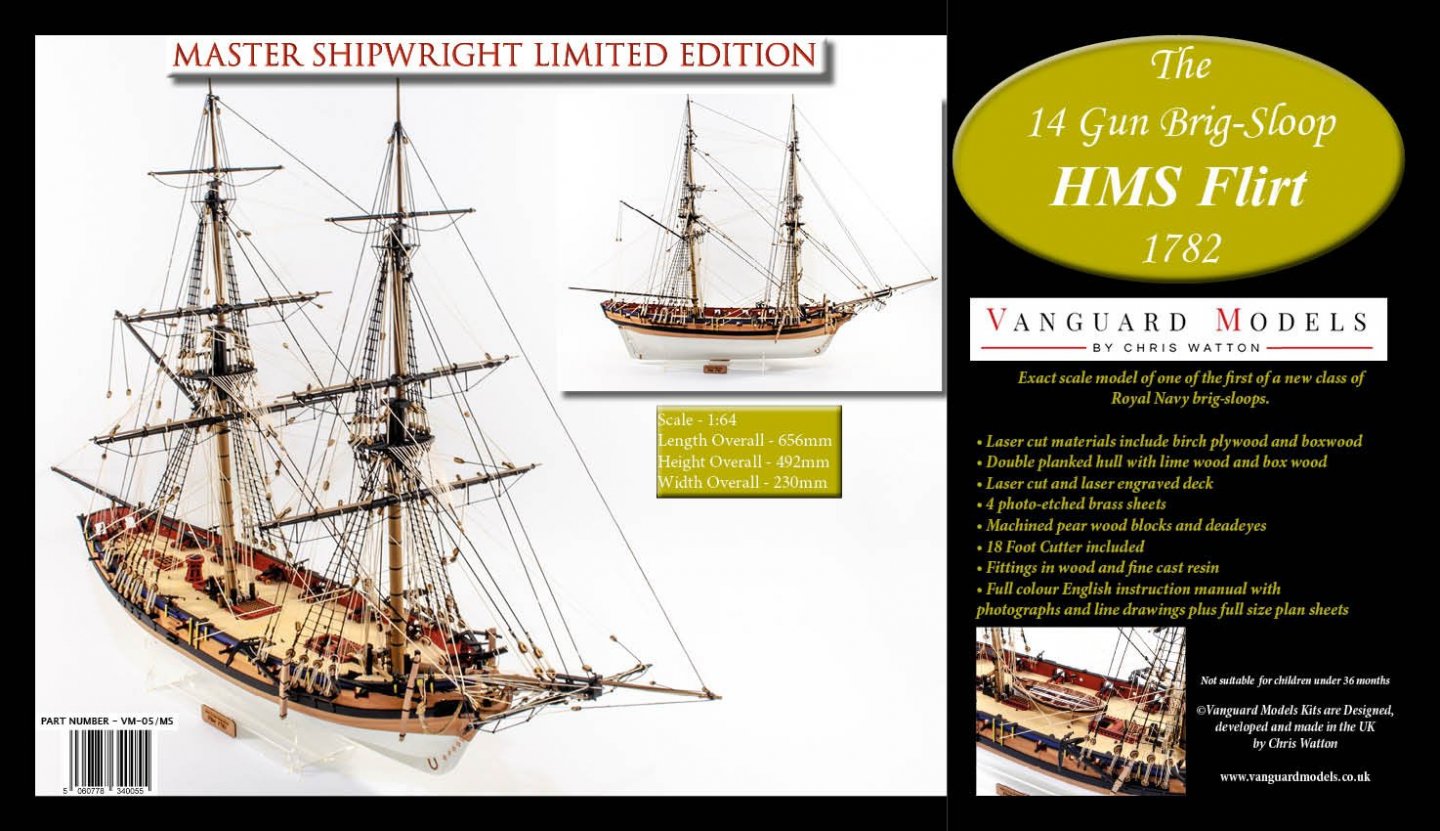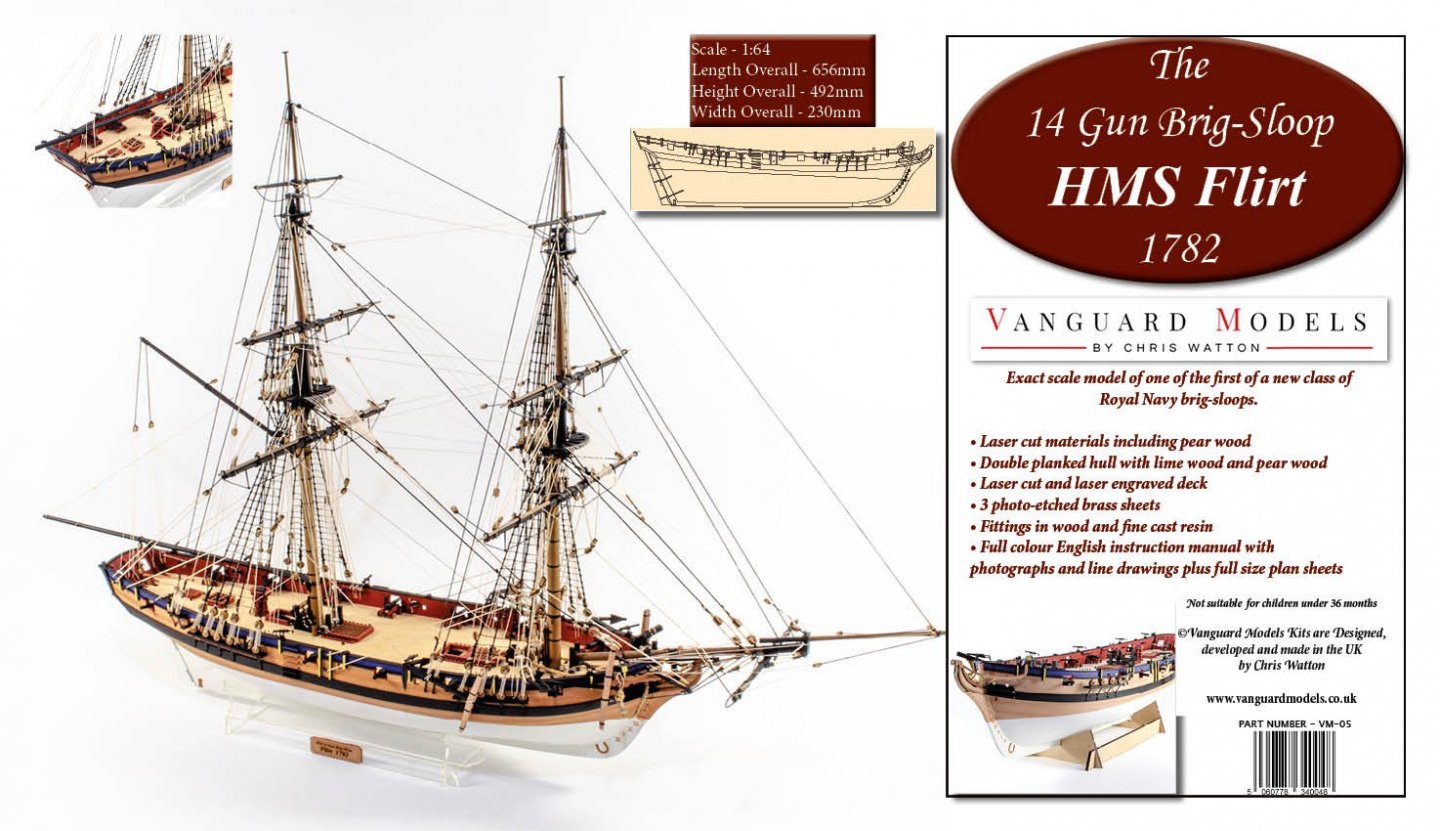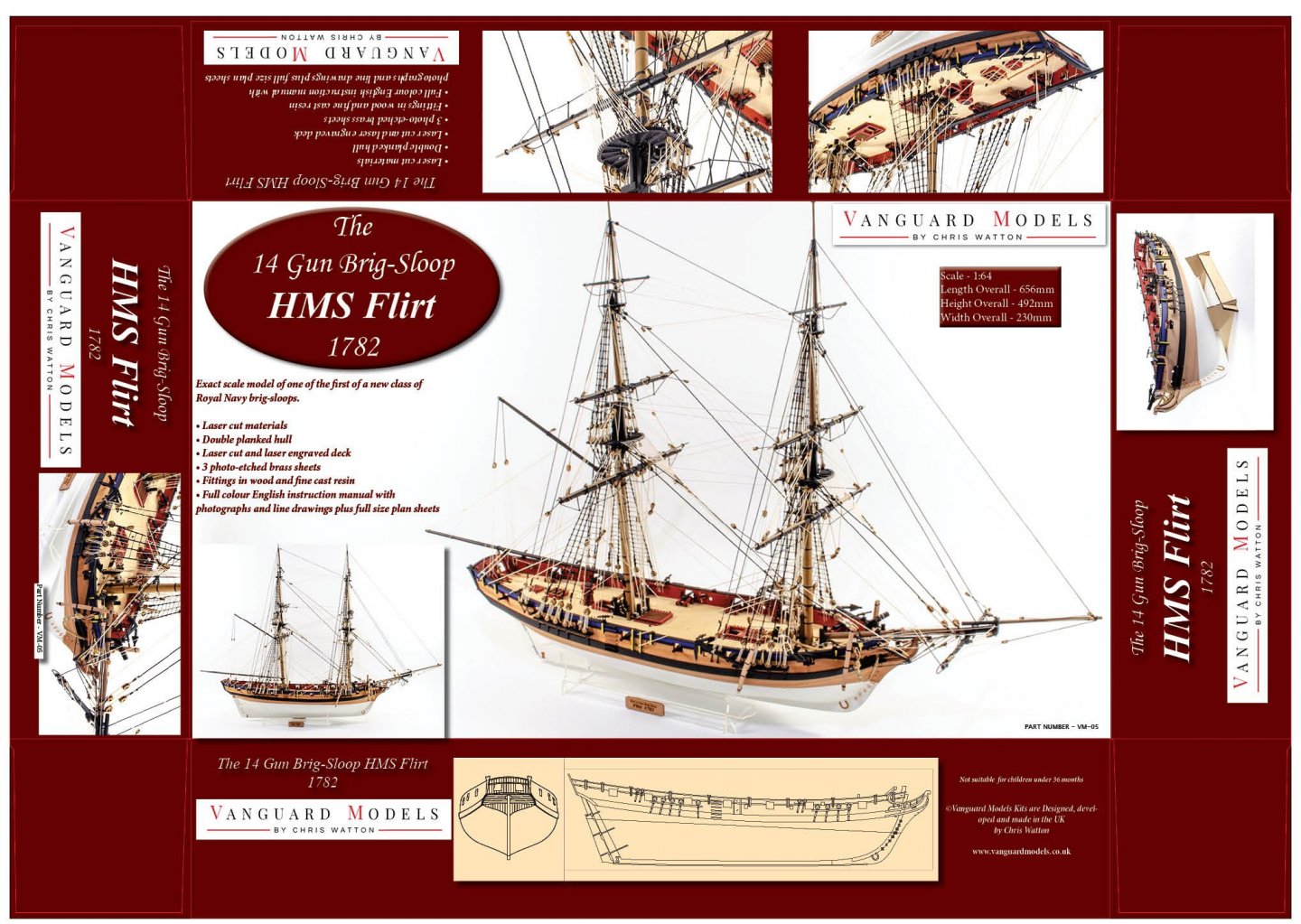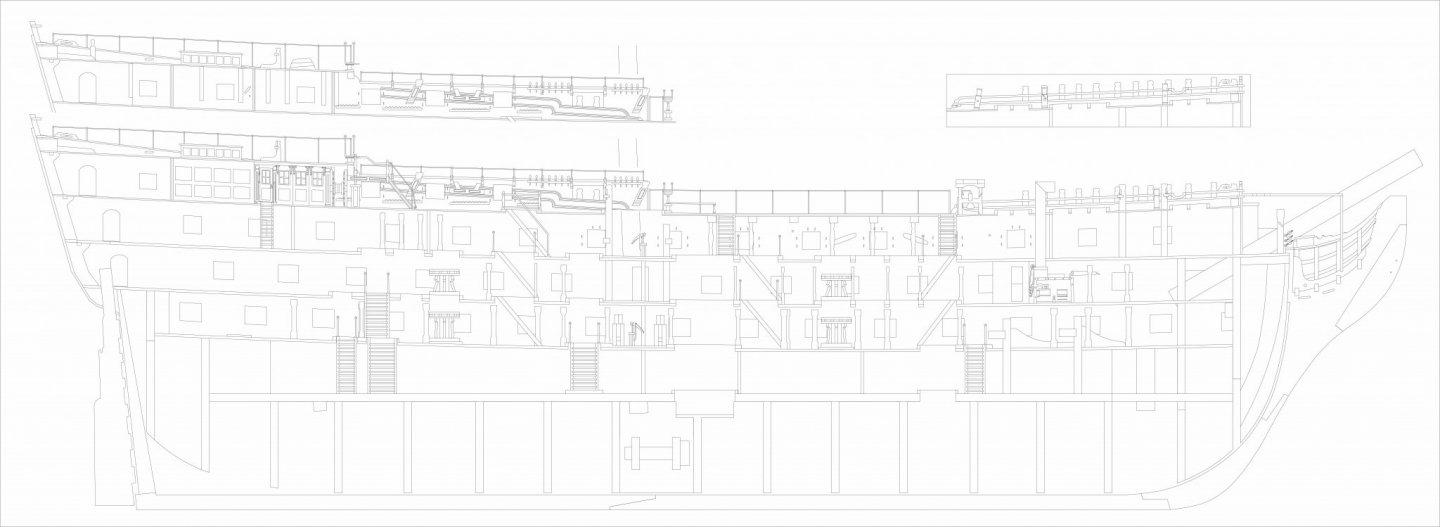-
Posts
2,331 -
Joined
-
Last visited
Content Type
Profiles
Forums
Gallery
Events
Everything posted by chris watton
-
**PRE-ORDER OPENS AT 12.01AM, THURSDAY 16th JULY** Hello, Seems like an age since I updated this, but I have been very busy with both Flirt and new designs for an end of year kit release. Anyway, I can say that I have all materials in and ready for both versions of Flirt. I am waiting for the plans, manual and boxes and labels to be delivered. I mentioned in Jim's Flirt thread that I changed my mind about the boxes at the last minute (was going to have the same boxes as Alert and Speedy, even did the full box art for the kid). Because of the length of some of the materials, the new box will be 520mm long (internal), 300mm wide and 90mm high. The kit components will fit much better. I will paste what I wrote on the Flirt thread: Standard version Flirt is already high spec, with laser cut pearwood and pearwood planking, Keel and bulkheads are 3mm MDF, and lower deck and stern frames are 2mm birch ply (the 2mm deck was initially meant to be done in 'Ceiba ply', but I decided this material was utter trash, and changed to much stronger 2mm birch ply) . There will be 2mm single blocks for rigging the cannon carriages if you so desire. Master Shipwright version is crazy spec, but will look fantastic, DelF's version of Speedy looks wonderful. Flirt MS will have laser cut keel and bulkheads in the highest quality birch ply, all wooden laser cut parts in 1mm, 1.5mm, 2mm, 3mm and 4mm boxwood, second planking in boxwood too. Machined pearwood blocks as standard PLUS 90+ 2.5mm 2 hole pear wood blocks for rigging the cannon carriages. This version also comes with the 18' cutter as standard, with 1x2mm boxwood planking. Both versions will have 100 metre reels of Gutterman 0.1mm thread, so there's more than enough for rigging the cannon as well as masts and yards. Both versions will be available to pre-order at 12am, as I know everything is in hand and all materials laser cut and fittings/wood packs made up, ready to go into the boxes once here.
-
Boxwood is almost 4 times the cost of even pearwood. It is much closer grained and very strong. The colour is different, lighter than pear wood. Boxwood is used a lot for delicate carving because it doesn't split like 'normal' woods. Flirt MS version has 6 laser cut sheets in varying thicknesses, and 1x4, 1x3 and 1x2mm boxwood strip for hull planking.
- 109 replies
-
- Vanguard Models
- Flirt
-
(and 1 more)
Tagged with:
-
Yes, I will not ship a kit without the box. I have to wait until I get the boxes so I can measure the area and then get the sleeves made. Yes, it means exactly that. The materials used are so expensive it can be nothing else but limited edition. More may be available in the future if I decide to invest in the materials again, but not for a good while.
- 109 replies
-
- Vanguard Models
- Flirt
-
(and 1 more)
Tagged with:
-
Standard version Flirt is already high spec, with laser cut pearwood and pearwood planking, Keel and bulkheads are 3mm MDF, and lower 2mm deck and stern frames are 2mm birch ply (the 2mm deck was initially meant to be done in 'Ceiba ply', but I decided this material was utter trash, and changed to much stronger 2mm birch ply) . There will be 2mm single blocks for rigging the cannon carriages if you so desire. Master Shipwright version is crazy spec, but will look fantastic, DelF's version of Speedy looks wonderful. Flirt MS will have laser cut keel and bulkheads in the highest quality birch ply, all wooden laser cut parts in 1mm, 1.5mm, 2mm, 3mm and 4mm boxwood, second planking in boxwood too. Machined pearwood blocks as standard PLUS 90+ 2.5mm 2 hole pear wood blocks for rigging the cannon carriages. This version also comes with the 18' cutter as standard, with 1x2mm boxwood planking. Both versions will have 100 metre reels of Gutterman 0.1mm thread, so there's more than enough for rigging the cannon as well as masts and yards. I changed my mind about the box very late, last week in fact. I am now having the same type as the small Fifie and Zulu, but a larger internal length (520x300x90mm), so the planking strips fit in better, plus I could have two labels for the boxes, one for the standard and one for the MS version.
- 109 replies
-
- Vanguard Models
- Flirt
-
(and 1 more)
Tagged with:
-
I will update you on that later this week, it does look pretty cool! ETA - Both versions of Flirt will be available to pre order very soon, as everything is almost ready and sorted, after a very stressful couple of weeks organising printing and new size boxes....
- 109 replies
-
- Vanguard Models
- Flirt
-
(and 1 more)
Tagged with:
-
OK, I have just finished the Flirt box art, ready to be sent to the printers. I now have to wait until I have the plans, manual and boxes done for me. For the Master Shipwright version of Flirt, I have decided to ditch the maple veneer deck due to high scrap rates, so have ordered 1mm thick maple sheet instead. As soon as that arrives, I can do the MS decks. Everything else is done, laser cut wise, and waiting to go into the boxes...
- 109 replies
-
- Vanguard Models
- Flirt
-
(and 1 more)
Tagged with:
-
It was nothing a little Photoshop masking couldn't fix... lol
- 195 replies
-
- lady eleanor
- vanguard models
-
(and 1 more)
Tagged with:
-
I was fooling with you, couldn't resist. MDF has much tighter tolerances, whereas ply tolerances are comical.
-
Yes
-
Ever seen what happens to the standard cheap ply used in most kits when it's a little damp...
-
And I had (finally) my Zulu sail set order arrive today, so all that ordered sail sets for their Zulus will be receiving them within the next week, and anyone who now orders a Zulu and sail set can be shipped together. Nice work of the Fifie, BE, I see these models as a 'blank canvas' for the more experienced, who like to stamp their own mark on the kit.
- 195 replies
-
- lady eleanor
- vanguard models
-
(and 1 more)
Tagged with:
-
I know there is a hell of a lot of photo etched parts on Bismarck and Hood, and PE is very expensive..
-
I know that I did no less than 31 full size plan sheets plus 114 page A3 size assembly manual for this Victory.
-
There is no law preventing you from not planking certain areas, as the hull structure is more than strong enough to not be clad in planking. As for how the kit may be broken up, I have no idea, as I no longer work for Amati. Personally, I would not break the kit up - it would be futile breaking it up into hull and masts/rig, as the former is 95% of the material expense.
-
The overall dimensions I have on my master drawings are: Length - 1582mm (includes bowsprit and gaff/boom) Height - 1061mm Width - 590mm (Main yard and stunsail booms) Hull only length - 1066mm I have attached a side cutaway profile of the kit, as the main question people ask is why would they want to buy this over other model kits of the same...
-
Yes, I am just waiting for the finished model to complete the box art and manual.
- 109 replies
-
- Vanguard Models
- Flirt
-
(and 1 more)
Tagged with:
-
The 18 foot cutter will soon be available to buy as a separate part very soon, it will include all laser cut wood, PE and 2x1mm wood strip for the planking, but need to sort out separate instructions for the mini build..
- 109 replies
-
- Vanguard Models
- Flirt
-
(and 1 more)
Tagged with:
-
There isn't right now. I only had enough materials for a couple. I ordered the boxwood specifically for the Flirt MS edition, but I had a couple of scrap on some sizes, so could only do 18 Flirt MS laser cut boxwood parts, but still had enough for a couple for Speedy (as quantities are different) When I order some more boxwood and I finally receive my pear wood block order, I will do a few more, but because of the cost of the materials used, they will always be very limited editions - I will let you know when I can do some more.
-
Yes, Ages of Sail contacted me a couple of weeks ago, and it all moved pretty fast from there. I have been quiet as I am working on finishing Flirt and also in the middle of designs for the 6th kit. I have also given my castor all 3-d files for all sizes of cannon barrels, so I will have samples of each (9, 12, 18, 24 and 32 pounders) next month.
About us
Modelshipworld - Advancing Ship Modeling through Research
SSL Secured
Your security is important for us so this Website is SSL-Secured
NRG Mailing Address
Nautical Research Guild
237 South Lincoln Street
Westmont IL, 60559-1917
Model Ship World ® and the MSW logo are Registered Trademarks, and belong to the Nautical Research Guild (United States Patent and Trademark Office: No. 6,929,264 & No. 6,929,274, registered Dec. 20, 2022)
Helpful Links
About the NRG
If you enjoy building ship models that are historically accurate as well as beautiful, then The Nautical Research Guild (NRG) is just right for you.
The Guild is a non-profit educational organization whose mission is to “Advance Ship Modeling Through Research”. We provide support to our members in their efforts to raise the quality of their model ships.
The Nautical Research Guild has published our world-renowned quarterly magazine, The Nautical Research Journal, since 1955. The pages of the Journal are full of articles by accomplished ship modelers who show you how they create those exquisite details on their models, and by maritime historians who show you the correct details to build. The Journal is available in both print and digital editions. Go to the NRG web site (www.thenrg.org) to download a complimentary digital copy of the Journal. The NRG also publishes plan sets, books and compilations of back issues of the Journal and the former Ships in Scale and Model Ship Builder magazines.




